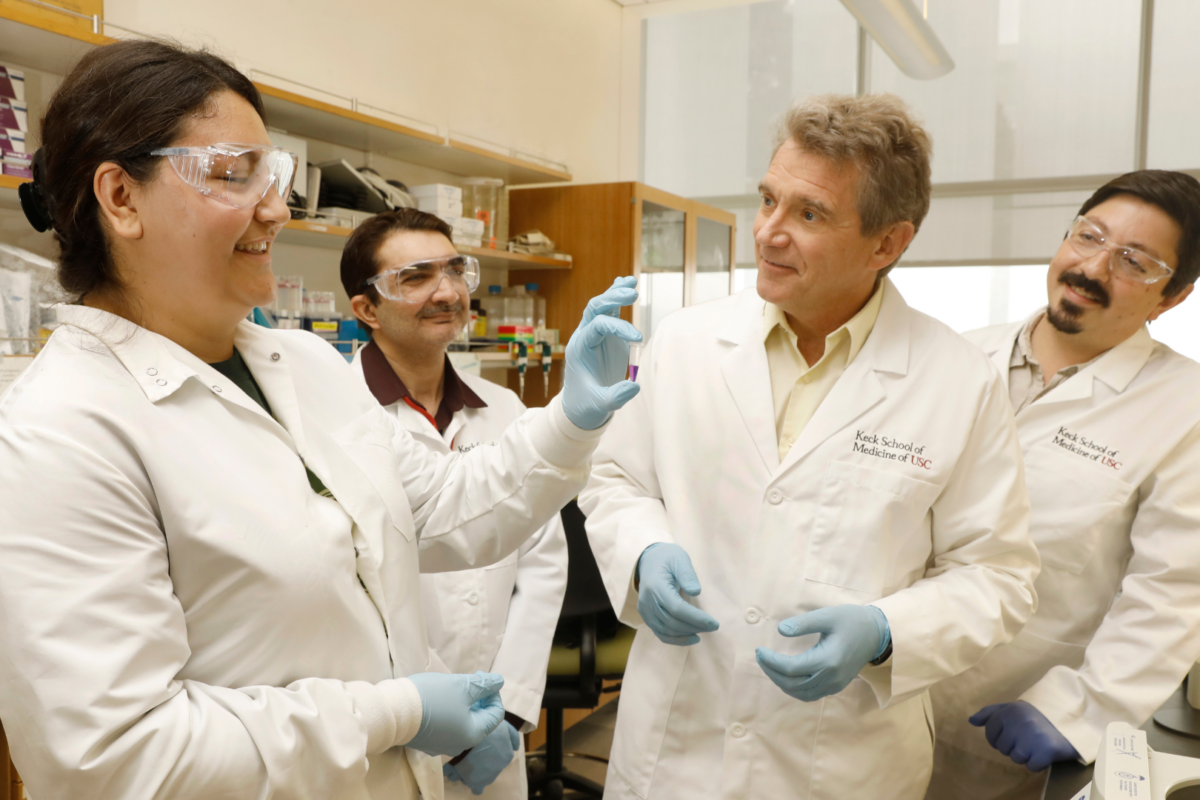
Success in Chuck Murry’s vision for regenerating heart tissue to restore function after a heart attack would look like a radical shift in the medical landscape. Ironically enough, he chalks up his start in studying the vital organ to chance.
When he was a third-year medical student at Duke University looking for a research lab, his first choice in oncology was unavailable. Of the options remaining, he signed on not out of interest in the subject matter but rather because he liked the professor. Truth was, he didn’t originally see a future in basic science. Then he made an essential contribution to a finding that changed the way cellular damage from heart attacks was understood.
“It’s thrilling to be the first in humanity to see or realize something,” said Murry, who is also chair of stem cell biology and regenerative medicine at the Keck School of Medicine. “Chance gave me the opportunity. What I didn’t expect was that I would fall in love with research the way I did.”
The turning point rerouted him to pursue a PhD, complemented afterward with the completion of his medical degree. Transitioning to the faculty at the University of Washington, he perhaps picked up another assist from chance: His research lab and the field of stem cell science started up at right about the same time around the turn of the millennium.
“The open question was, if you want to fix the heart, where are we ever going to get the heart muscle cells,” Murry said. “I figured making more cells was probably something that would remain unsolved until the next generation took the reins. When stem cells came out, we could see, ‘Okay, now we have a source.’ So we pivoted.”
Early on, some in his orbit counseled him to reconsider his approach.
“Well-intentioned people gave me the tough-love talk,’” he said. “They said, ‘Chuck, we think you’re throwing away your career.’ But I couldn’t let go of it. Or it wouldn’t let go of me.”
Over nearly a quarter-century, Murry has steadfastly pursued the goal of coaxing stem cells to develop into heart muscle and combining graft cells with a damaged host to form a functioning biological pump.
Often, a leap forward led to a new obstacle. The researchers meet each setback with resolve and hard work. Most recently, his team found that, in late preclinical work, new tissue was beating to a different rhythm than its host and causing the heart to race.
“I believe it will work,” Murry said. “When something like this arrhythmia problem came up, I just thought rationally, there’s going to be a way to solve this. I can see in my mind that, according to all the rules of science that I know, this should work. What’s mostly changed is that people have gradually started to share that belief.”
Indeed, he and his colleagues reported earlier this year that, by deftly using gene editing to manipulate four specific spots in the genome, they had reversed damage from heart attack in rhesus monkeys while cutting down on arrhythmias by 95%.
“Across my career, I’m proudest of taking heart regeneration to the point where we could make it work in an animal that predicts what might happen in a human,” Murry said.
“I think it put a flag in the sand that said, ‘Come on, people! This can work. Let’s get it done.’ I feel a sense of urgency. I think patients are waiting, and science is ready for this to move.”
Importantly, that sense of urgency is counterbalanced by prudence. Murry’s team functionally put on hold its efforts to move heart regeneration into the clinic for years to concentrate on eliminating the mistimed heartbeats.
“I wouldn’t have done this in my mother at that point,” Murry said. “My internal compass has always been, if you wouldn’t have done it in your mom, you’re not ready to do this in someone else’s loved one.”
He takes that mix of drive and discernment to his leadership at USC Stem Cell as well. He aims to build on current strengths in basic science to form an interdisciplinary team accelerating research to clinical trials. Murry wants to make USC’s medical school a destination for addressing the most debilitating health challenges, from heart disease to arthritis, blindness and beyond.
“USC Stem Cell is a gem of a program, and the excellence in basic science is a foundation for taking it to the next level,” he said. “I’d like to begin studies in humans. We will do it ethically, responsibly and as safely as possible. Meanwhile, the dual focus on knowledge and service to society will make for a great training environment.”
Having joined USC in fall 2024, Murry is working with his USC Stem Cell colleagues and medical school leadership to define opportunities to grow the program. One certain thing is that teamwork will be essential.
“We’re going to have to convene a whole community of physicians, scientists and engineers to execute on this vision,” he said. “It’s way too big for any one person, or any one department even, to accomplish. When we collaborate, we go further, faster.”
